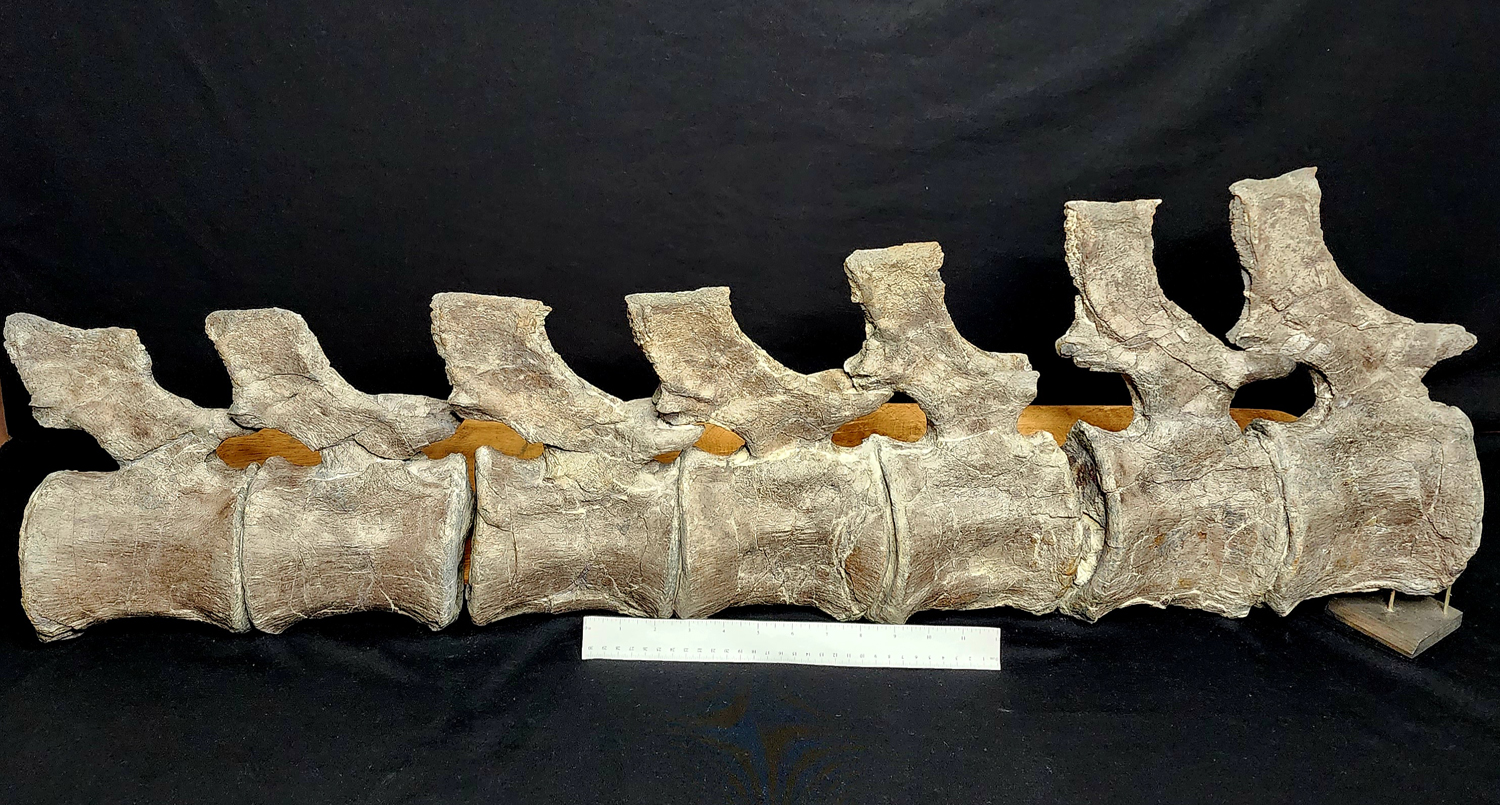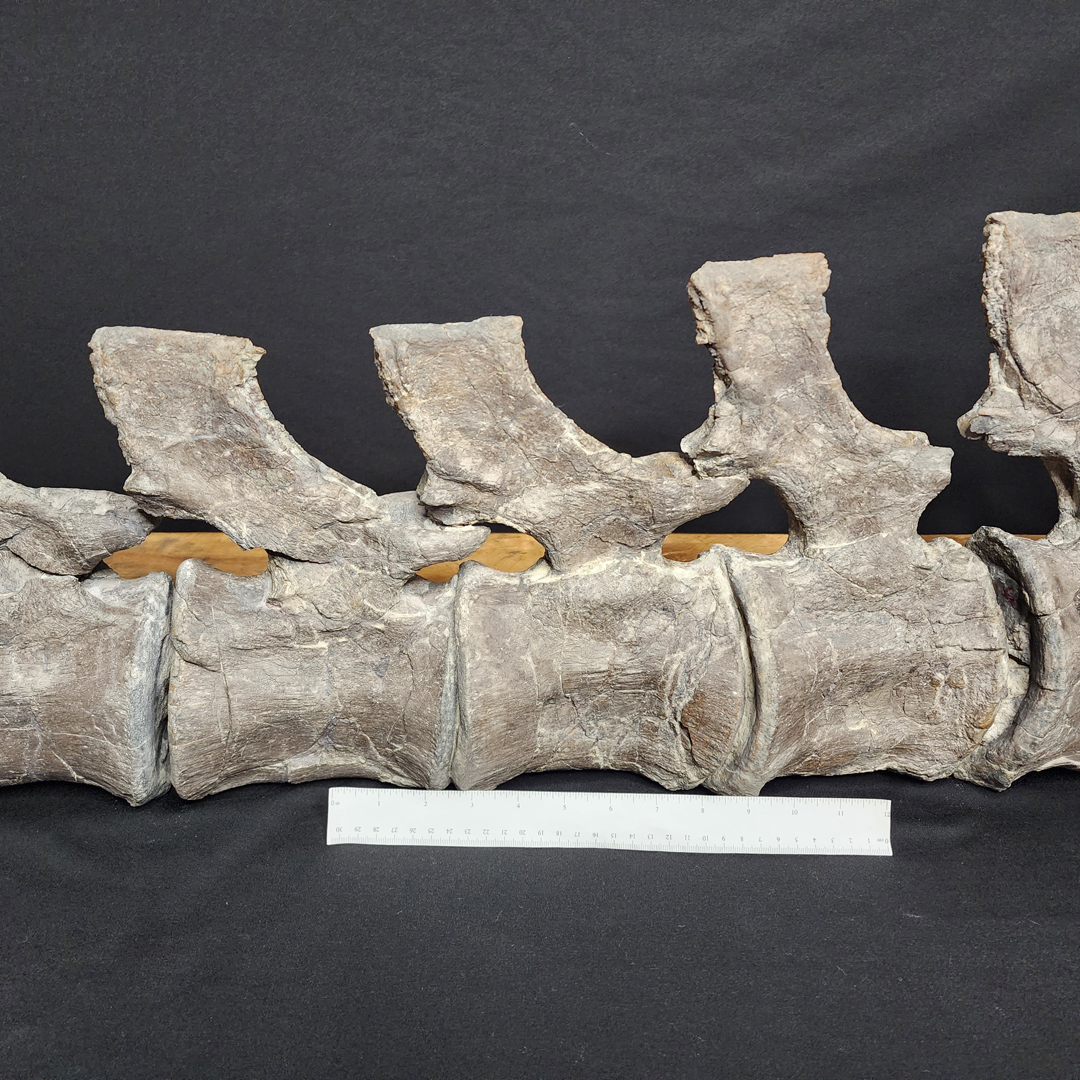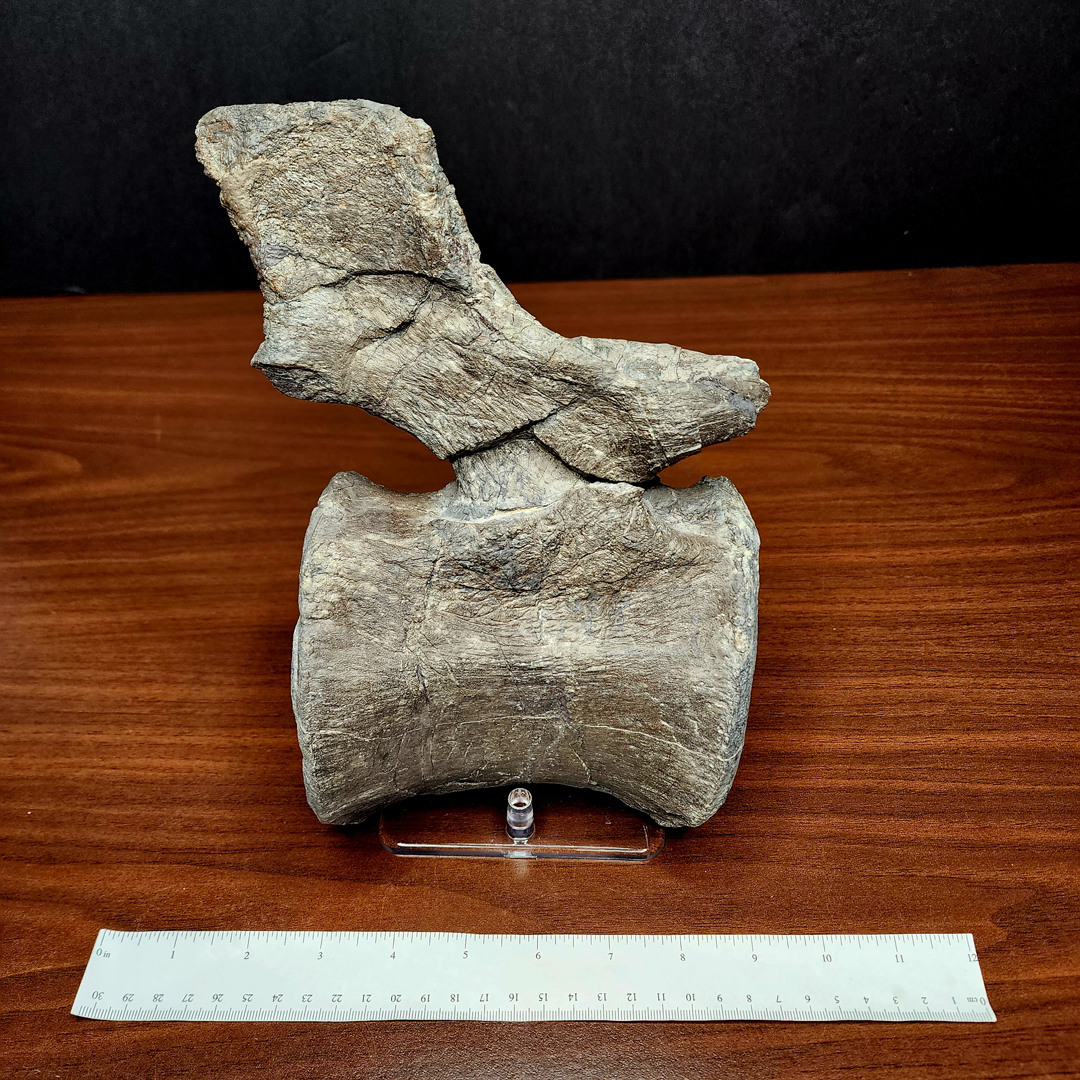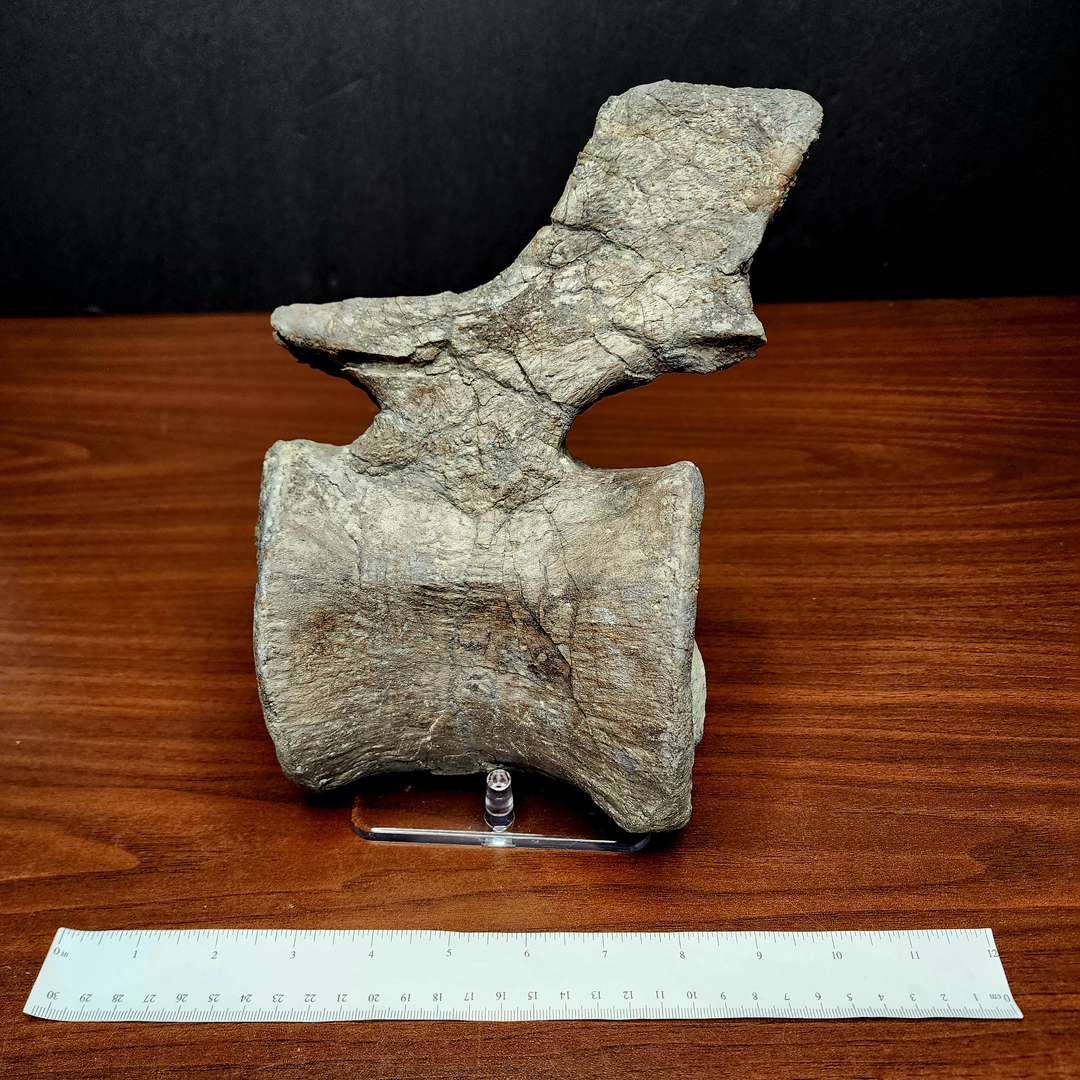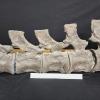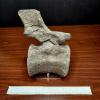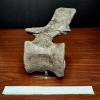
Jurassic Morrison Camarasaurus Vertebral Series
Camarasaurus sp.
Morrison Formation (Brushy Basin Mbr)
Upper Jurassic
Moffat County, Colorado
Morrison Formation (Brushy Basin Mbr)
Upper Jurassic
Moffat County, Colorado
Here is an articulated series of mid-caudal vertebrae from an adult Camarasaurus. The preservation of these bones is extraordinary. There is very little restoration, and it consists mainly of filled natural fractures. The bones are well inflated and exhibit only a small degree of later compression due to burial. The surface detail of the bone is phenomenal. The specimen was collected as seen in fully articulated position. The overall length is 41 inches, and the maximum height is 13 inches. These bones were associated with a partial Camarasaurus skeleton collected from our dinosaur quarry found in a clay lens that was deposited in an incised valley fill deposit.
Camarasaurus was a genus of quadrupedal, herbivorous dinosaurs. It was the most common of the giant sauropods to be found in North America. Its fossil remains have been found in the Morrison Formation of Colorado and Utah, dating to the Late Jurassic epoch (Kimmeridgian to Tithonian stages), between 155 and 145 million years ago. Camarasaurus presented a distinctive cranial profile of a blunt snout and an arched skull that was remarkably square. It likely travelled in herds, or at least in family groups. The name means "chambered lizard", referring to the hollow chambers in its vertebrae.
Camarasaurus is among the most common and frequently well-preserved sauropod dinosaurs. The maximum size of the most common species, C. lentus, was about 15 meters (49 ft) in length. The largest species, C. supremus, reached a maximum length of 23 meters (75 ft) and maximum estimated weight of 47 tonnes (51.8 tons).
The arched skull of Camarasaurus was remarkably square and the blunt snout had many fenestrae, though it was sturdy and is frequently recovered in good condition by paleontologists. The 19 centimeter long (7.5 in) teeth were shaped like chisels (spatulate) and arranged evenly along the jaw. The strength of the teeth indicates that Camarasaurus probably ate coarser plant material than the slender-toothed diplodocids
Camarasaurus was a genus of quadrupedal, herbivorous dinosaurs. It was the most common of the giant sauropods to be found in North America. Its fossil remains have been found in the Morrison Formation of Colorado and Utah, dating to the Late Jurassic epoch (Kimmeridgian to Tithonian stages), between 155 and 145 million years ago. Camarasaurus presented a distinctive cranial profile of a blunt snout and an arched skull that was remarkably square. It likely travelled in herds, or at least in family groups. The name means "chambered lizard", referring to the hollow chambers in its vertebrae.
Camarasaurus is among the most common and frequently well-preserved sauropod dinosaurs. The maximum size of the most common species, C. lentus, was about 15 meters (49 ft) in length. The largest species, C. supremus, reached a maximum length of 23 meters (75 ft) and maximum estimated weight of 47 tonnes (51.8 tons).
The arched skull of Camarasaurus was remarkably square and the blunt snout had many fenestrae, though it was sturdy and is frequently recovered in good condition by paleontologists. The 19 centimeter long (7.5 in) teeth were shaped like chisels (spatulate) and arranged evenly along the jaw. The strength of the teeth indicates that Camarasaurus probably ate coarser plant material than the slender-toothed diplodocids


